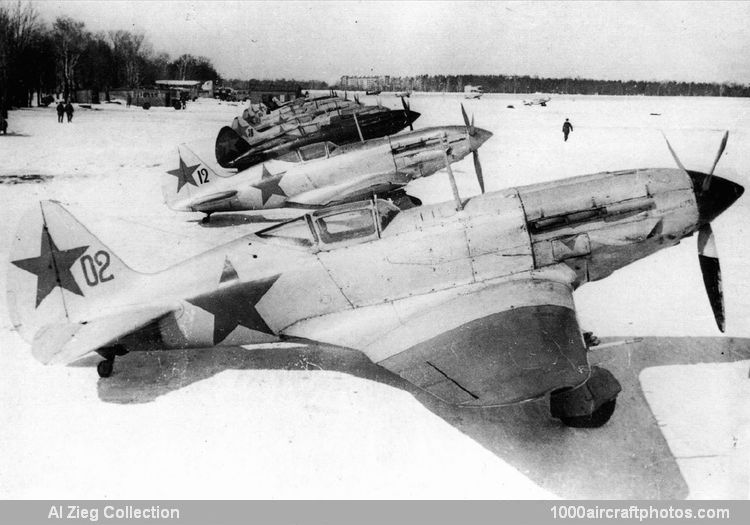The 1,350 hp Mikulin AM-35A engine was moved forward 4 in (10 cm); dihedral of the outer wing panels was increased by 1°; a 66 gal (250 l) supplementary fuel tank was introduced beneath the pilot's seat; the aft fuselage decking was cut down; the radiator bath fairing was enlarged and extended forward; the supercharger intakes were revised; 0.354 in (9 mm) seat armor was provided, together with radio, and four wing points were introduced for a maximum external load of 485 lb (220 kg).
The first MiG-3 left the factory in December 1940, 11 being completed by the end of the month; 140 were produced in January 1941, and, by June, production had peaked at 25 aircraft every 24 hours. The first MiG-3 was delivered to a VVS regiment in April 1941 – simultaneously with the MiG-1 – and production continued until December 23, 1941 with approximately 3,120 built, but 50 more were completed from component stocks in the early summer of 1942.
Some MiG-3s had a supplementary pair of 0.50 in (12.7 mm) BK machine guns under the wings – raising take off weight to 7,738 lb (3,510 kg) – and others were fitted with two UBK guns of similar caliber in the wings. Tests were also performed with two fuselage-mounted 0.787 in (20 mm) ShVAK cannon.
The photo shows a line of MiG-3s on the Vnukovo airport, 17 mls (27 km) from Moscow city. The occasion was the renaming of 120 IAP (Istrebitel'nyi Aviatsionniy Polk, Fighter Aviation Regiment) of the Moscow PVO (Protivovozdushnogo Oborona, Anti-Air Defense forces) to 12 Gv.IAP (Gvardeiskii Istrebitel'nyi Aviatsionniy Polk, Guards Fighter Aviation Regiment) as recognition for its courage and achievement."
Span: 33 ft 5.5 in (10.20 m)
Length: 27 ft 0.875 in (8.25 m)
Height: 8 ft 8.33 in (2.65 m)
Wing area: 187.73 sq.ft (17.44 sq.m)
Weight empty: 5,950 lb (2,699 kg)
Loaded weight: 7,385 lb (3,350 kg)
Max speed: 398 mph (640 kmh) at 25,590 ft (7,800 m)
Range: 510 mls (820 km)
